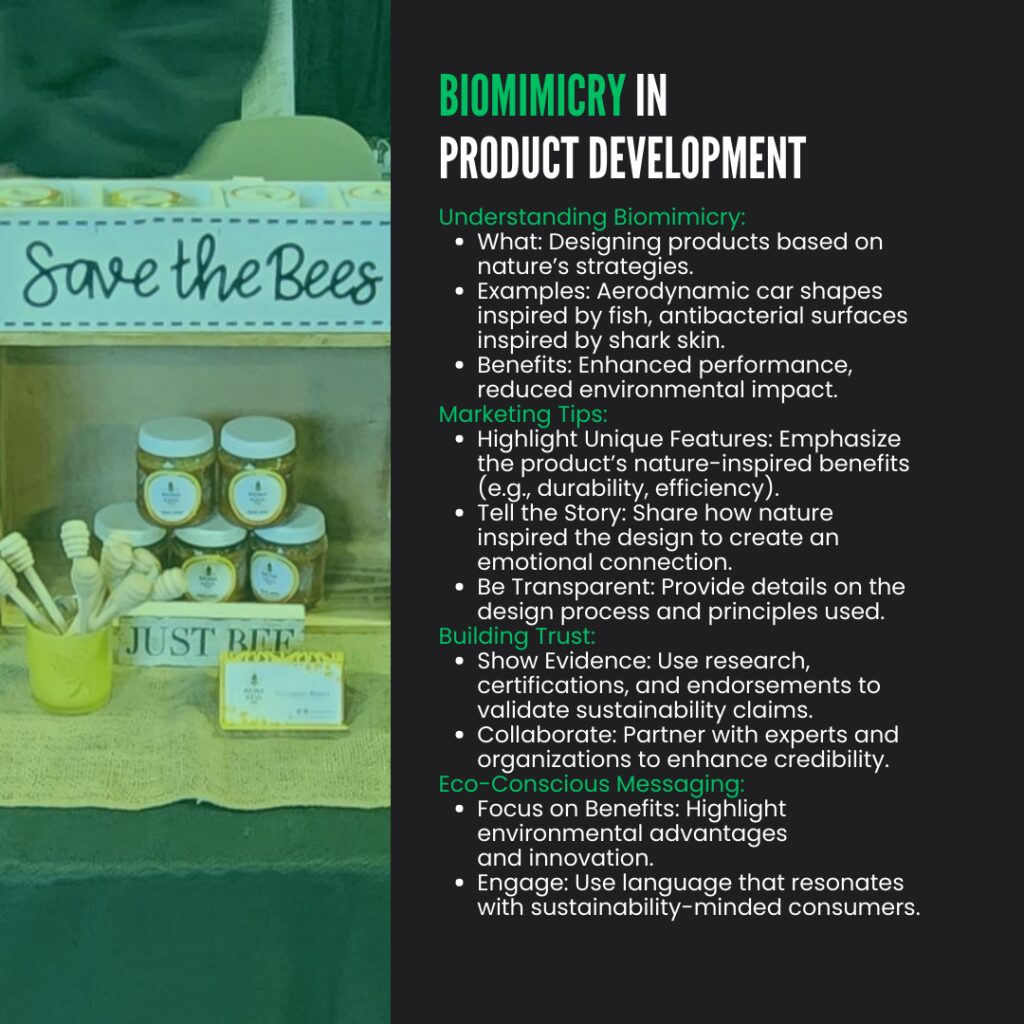Biomimicry is a game-changer in product development, taking cues from nature’s incredible designs and processes. Products born from biomimicry tend to be more sustainable, efficient, and innovative, which resonates with eco-conscious consumers. This blog post dives into how brands can effectively market these nature-inspired products, highlighting their unique qualities to attract environmentally aware customers.
Understanding Biomimicry in Product Development:
At its core, biomimicry in product development is about learning from nature’s designs and applying these lessons to solve human challenges. This approach involves studying the functional strategies that plants, animals, and ecosystems have developed over millions of years to survive and thrive in their environments. For example, consider how the sleek, streamlined shape of a fish reduces drag as it moves through water. Engineers have applied this principle to car design, creating vehicles that are not only more aerodynamic but also more fuel-efficient. Similarly, the rough texture of shark skin, which inhibits bacterial growth, has inspired the development of antibacterial surfaces for hospitals and public spaces.
These nature-inspired innovations do more than just improve product performance—they also help reduce environmental impact. By mimicking nature, we can develop products that use fewer resources, generate less waste, and operate more efficiently. This aligns with sustainable practices and meets the growing consumer demand for products that are better for the planet.
Marketing Biomimicry-Inspired Products:
To effectively market biomimicry-inspired products, brands need to focus on what makes these products truly special—their unique value propositions. It’s not enough to simply say that a product is inspired by nature; marketers must clearly communicate the tangible benefits these designs offer. For instance, a jacket designed to mimic the thermal regulation of polar bear fur could be marketed not only for its warmth but also for its lightweight and breathable properties. A packaging material inspired by the structure of a honeycomb could be highlighted for its strength and durability, as well as its reduced material use.
Storytelling plays a crucial role here. People are naturally drawn to stories, especially those that connect them to something larger than themselves. By telling the story of how a product was inspired by nature—perhaps a scientist observing the behavior of ants to solve traffic flow problems or a designer studying the wings of a butterfly to develop better solar panels—brands can create an emotional connection with consumers. This narrative not only enhances the product’s appeal but also positions the brand as innovative, forward-thinking, and environmentally responsible.
Building Consumer Trust and Interest:
In an era where greenwashing is a common concern, transparency is vital when marketing biomimicry-inspired products. Consumers are increasingly skeptical of vague or exaggerated claims about sustainability. To build trust, brands should provide detailed information about how their products were developed and the specific natural principles they mimic. This could include sharing the research behind the product’s design, offering insights into the development process, or explaining how the product’s features align with natural strategies.
Certifications and endorsements from respected environmental organizations can further validate a product’s sustainability claims. Collaborating with experts in biomimicry or sustainability can also lend credibility and help build consumer trust. By being transparent and providing evidence of their commitment to sustainability, brands can differentiate themselves from competitors and establish a loyal customer base.
Leveraging Eco-Conscious Messaging:
The language used in marketing biomimicry-inspired products should resonate with eco-conscious consumers who prioritize sustainability. It’s important to emphasize the environmental benefits of these products—how they conserve resources, reduce waste, or lower carbon footprints. For example, a water filtration system inspired by the filtering mechanisms of marine organisms could be marketed for its efficiency and reduced environmental impact compared to traditional systems. Highlighting these benefits can appeal to consumers who are looking for products that align with their values and contribute to a more sustainable future.
In addition to highlighting the environmental benefits, marketers should also focus on innovation. Biomimicry-inspired products are not just good for the planet—they are also often more effective and efficient. By showcasing the innovation behind these products, brands can attract a broader audience, including those who may be less motivated by sustainability but are interested in cutting-edge technology and design.

Conclusion:
Biomimicry offers a fresh and exciting approach to product development, combining innovation with sustainability in a way that resonates deeply with today’s consumers. By effectively marketing these nature-inspired products, brands can not only attract eco-conscious customers but also build trust, differentiate themselves in a competitive market, and contribute to a more sustainable world. As we continue to seek solutions to our environmental challenges, the inspiration we find in nature will not only guide us in designing better products but also in creating a more harmonious relationship with our planet.
*Content was generated with AI based on my notes and direction, then edited and refined by me for accuracy.




